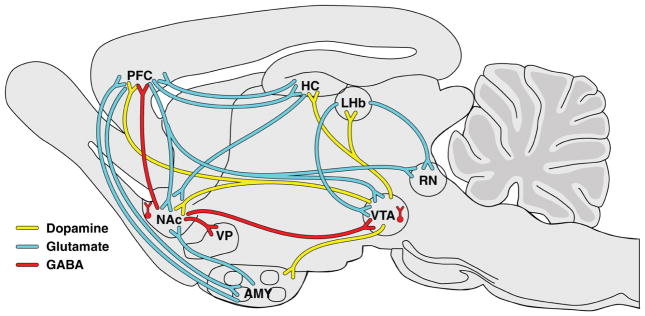Figure 1.
Glutamate, GABA and dopamine interactions that are involved in the development of nicotine dependence. Nicotine binds to excitatory nicotinic acetylcholine receptors (not shown in figure) that are located throughout the brain as auto- or heteroreceptors at presynaptic terminals that regulate the release of several neurotransmitters, including dopamine, glutamate and γ-aminobutyric acid (GABA). The mesolimbic dopaminergic neurons (depicted as yellow lines) mediate the reinforcing effects of several drugs of abuse including nicotine. These dopaminergic neurons originate in the ventral tegmental area and project to several limbic and cortical regions, including the nucleus accumbens, prefrontal cortex, amygdala, hippocampus, and habenula. The activity of these dopaminergic neurons is regulated by reciprocal glutamatergic (excitatory; depicted as blue) and GABAergic (inhibitory; depicted as red lines) projections that originate from the aforementioned cortical and limbic brain regions. AMY, amygdala; LHb, lateral habenula; HC, hippocampus; NAc, nucleus accumbens; PFC, prefrontal cortex; RN, raphe nucleus; VP, ventral pallidum; VTA, ventral tegmental area. [(6), with permission with Neuropharmacology]

